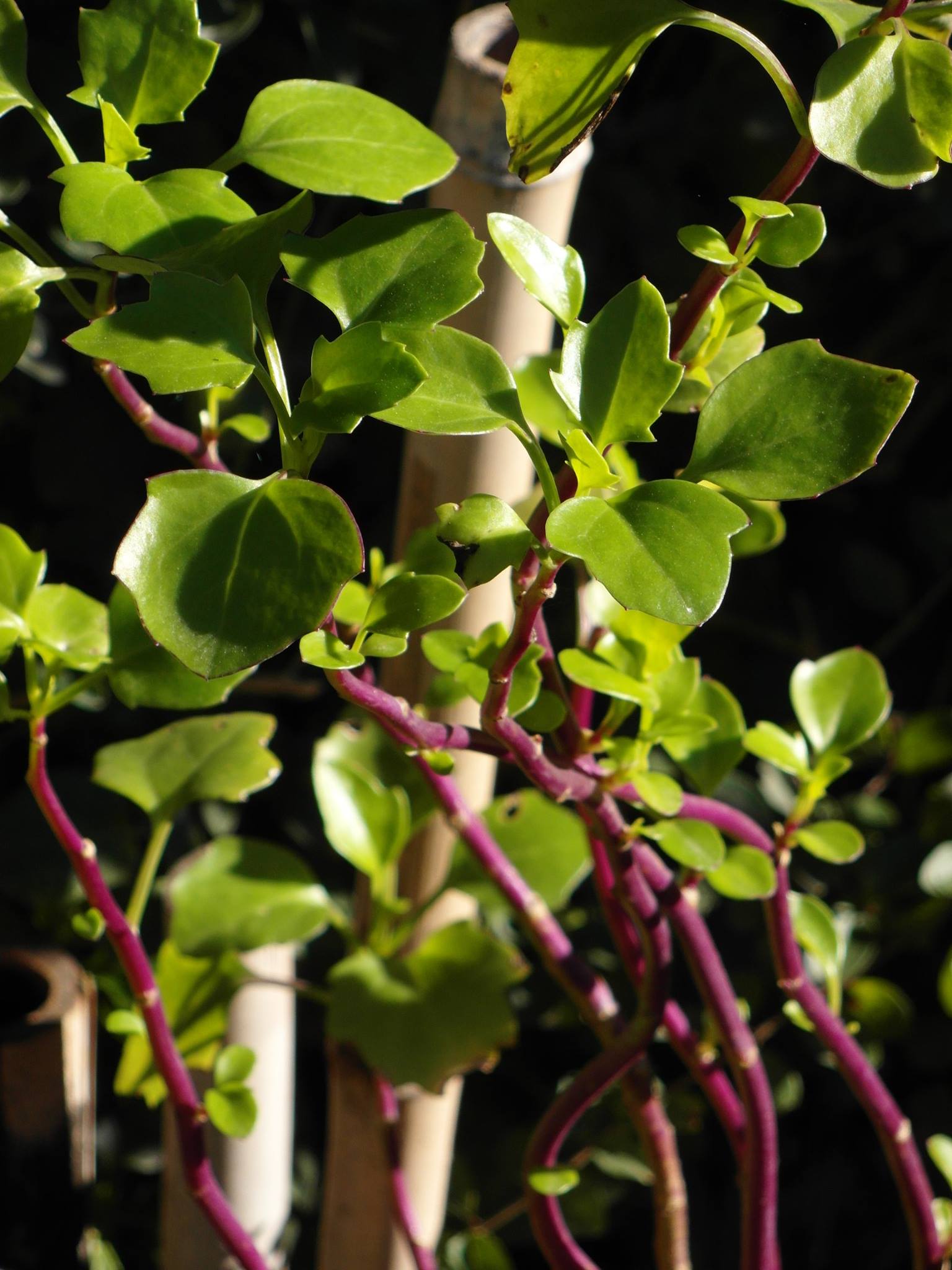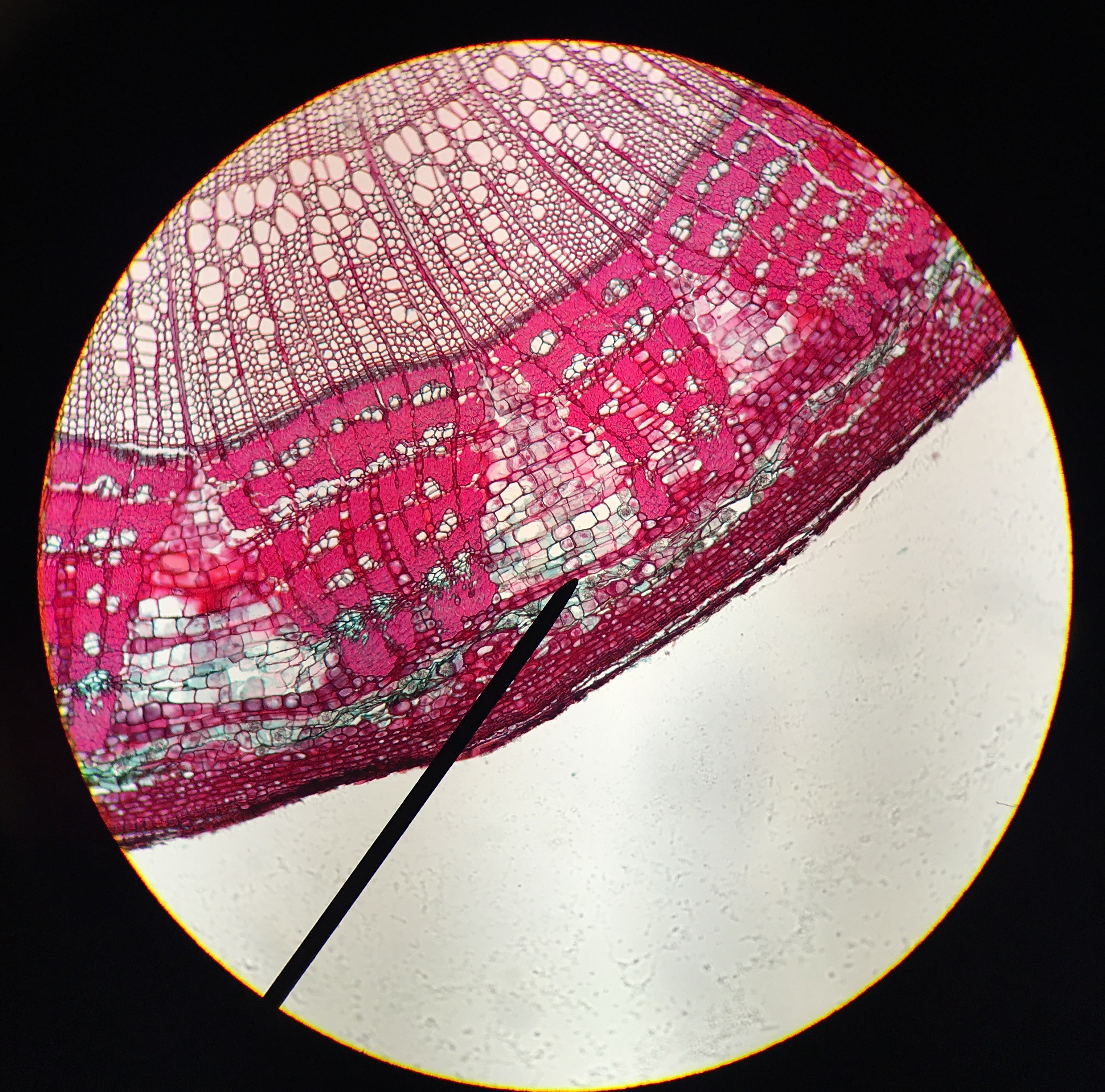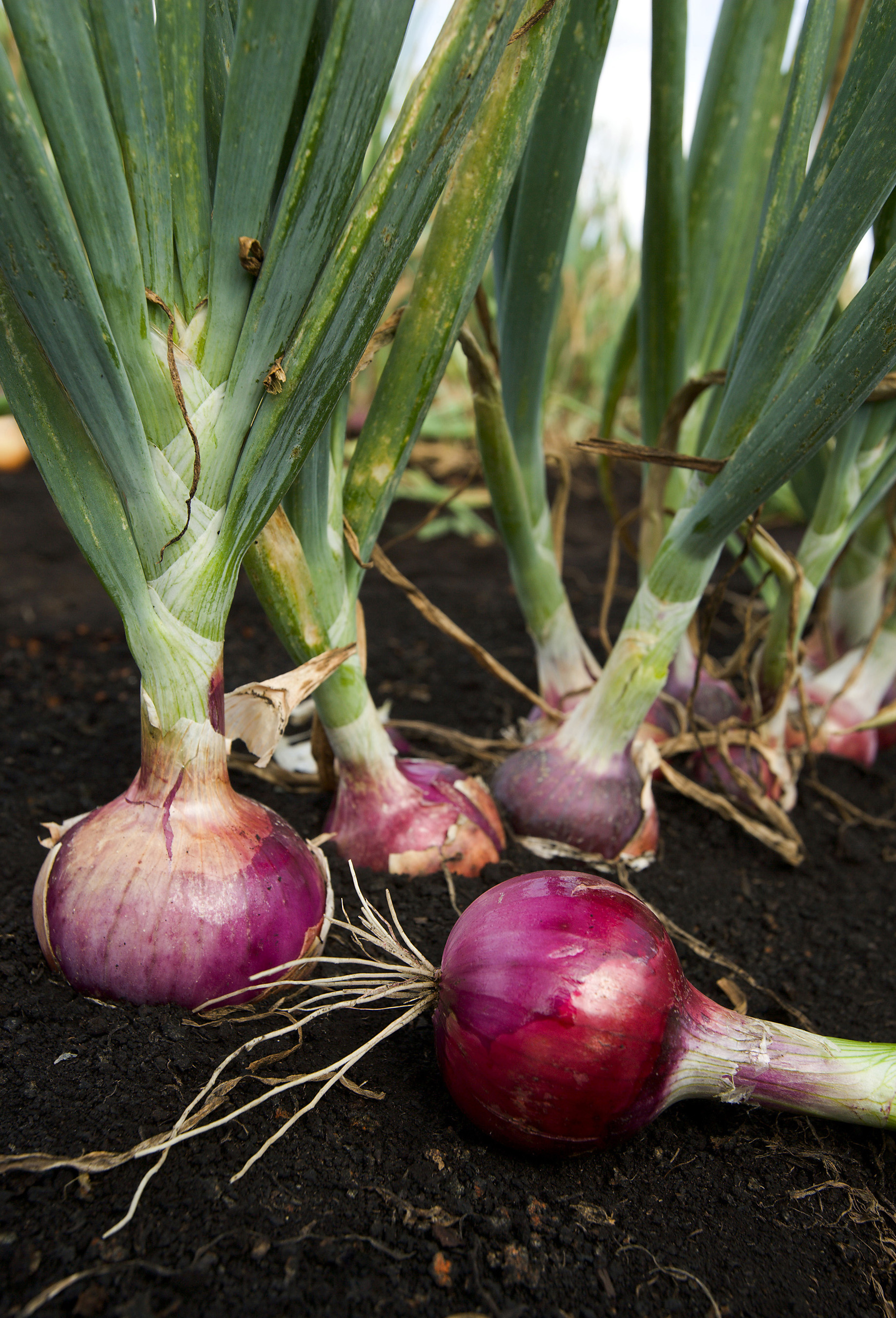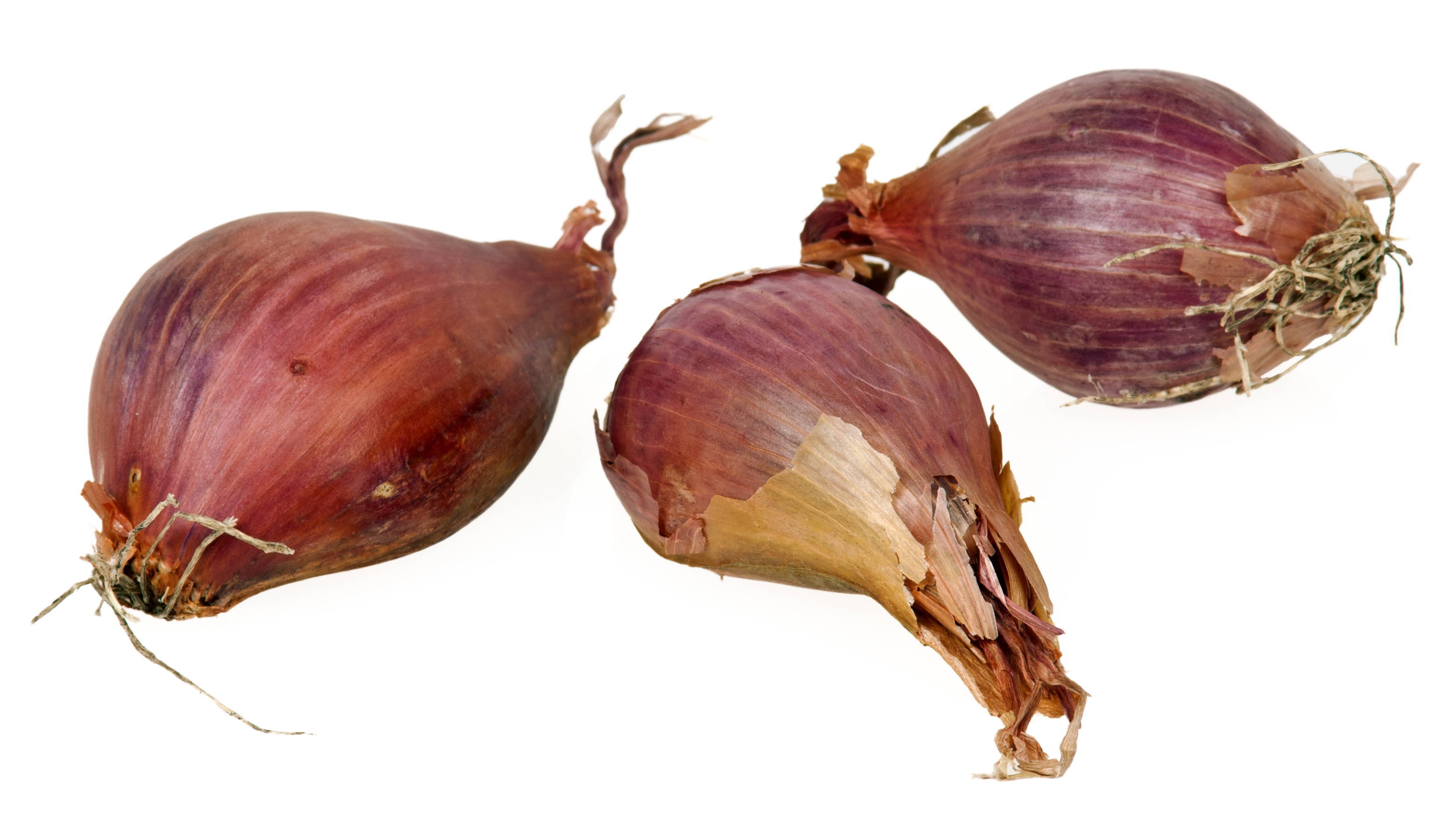|
Internodes
A stem is one of two main structural axes of a vascular plant, the other being the root. It supports leaves, flowers and fruits, transports water and dissolved substances between the roots and the shoots in the xylem and phloem, stores nutrients, and produces new living tissue. The stem can also be called halm or haulm. The stem is normally divided into nodes and internodes: * The nodes hold one or more leaves, as well as buds which can grow into branches (with leaves, conifer cones, or flowers). Adventitious roots may also be produced from the nodes. * The internodes distance one node from another. The term "shoots" is often confused with "stems"; "shoots" generally refers to new fresh plant growth including both stems and other structures like leaves or flowers. In most plants stems are located above the soil surface but some plants have underground stems. Stems have four main functions which are: * Support for and the elevation of leaves, flowers, and fruits. The stems ... [...More Info...] [...Related Items...] OR: [Wikipedia] [Google] [Baidu] |
Cactus
A cactus (, or less commonly, cactus) is a member of the plant family Cactaceae, a family comprising about 127 genera with some 1750 known species of the order Caryophyllales. The word ''cactus'' derives, through Latin, from the Ancient Greek word (''káktos''), a name originally used by Theophrastus for a spiny plant whose identity is now not certain. Cacti occur in a wide range of shapes and sizes. Although some species live in quite humid environments, most cacti live in habitats subject to at least some drought. Many live in extremely dry environments, even being found in the Atacama Desert, one of the driest places on Earth. Because of this, cacti show many adaptations to conserve water. For example, almost all cacti are succulents, meaning they have thickened, fleshy parts adapted to store water. Unlike many other succulents, the stem is the only part of most cacti where this vital process takes place. Most species of cacti have lost true leaves, retaining only spin ... [...More Info...] [...Related Items...] OR: [Wikipedia] [Google] [Baidu] |
Phylloclade
Phylloclades and cladodes are flattened, photosynthetic shoots, which are usually considered to be modified branches. The two terms are used either differently or interchangeably by different authors. '' Phyllocladus'', a genus of conifer, is named after these structures. Phylloclades/cladodes have been identified in fossils dating from as early as the Permian. Definition and morphology The term "phylloclade" is from the New Latin ''phyllocladium'', itself derived from Greek ''phyllo'', leaf, and ''klados'', branch. Definitions of the terms "phylloclade" and "cladode" vary. All agree that they are flattened structures that are photosynthetic and resemble leaf-like branches. In one definition, phylloclades are a subset of cladodes, namely those that greatly resemble or perform the function of leaves, as in Butcher's broom (''Ruscus aculeatus'') as well as '' Phyllanthus'' and some ''Asparagus'' species. By an alternative definition, cladodes are distinguished by their limited ... [...More Info...] [...Related Items...] OR: [Wikipedia] [Google] [Baidu] |
Glossary Of Botanical Terms
This glossary of botanical terms is a list of definitions of terms and concepts relevant to botany and plants in general. Terms of plant morphology are included here as well as at the more specific Glossary of plant morphology and Glossary of leaf morphology. For other related terms, see Glossary of phytopathology, Glossary of lichen terms, and List of Latin and Greek words commonly used in systematic names. A B ... [...More Info...] [...Related Items...] OR: [Wikipedia] [Google] [Baidu] |
Flower
A flower, sometimes known as a bloom or blossom, is the reproductive structure found in flowering plants (plants of the division Angiospermae). The biological function of a flower is to facilitate reproduction, usually by providing a mechanism for the union of sperm with eggs. Flowers may facilitate outcrossing (fusion of sperm and eggs from different individuals in a population) resulting from cross-pollination or allow selfing (fusion of sperm and egg from the same flower) when self-pollination occurs. There are two types of pollination: self-pollination and cross-pollination. Self-pollination occurs when the pollen from the anther is deposited on the stigma of the same flower, or another flower on the same plant. Cross-pollination is when pollen is transferred from the anther of one flower to the stigma of another flower on a different individual of the same species. Self-pollination happens in flowers where the stamen and carpel mature at the same time, and are positione ... [...More Info...] [...Related Items...] OR: [Wikipedia] [Google] [Baidu] |
Underground Stem
Underground stems are modified plant parts that derive from stem tissue but exist under the soil surface. They function as storage tissues for food and nutrients, in propagation of new clones, and in perennation (survival from one growing season to the next). Types include bulbs, corms, rhizomes, stolons, and tubers. Plants have two axes of growth, which can be best seen from seed germination and growth. Seedlings develop two structures or axes of growth, one that develops upward out of the soil, called stems, and structures that develop downward which are called roots. The roots are modified to have root hairs and branch indiscriminately with cells that take in water and nutrients, while the stems are modified to move water and nutrients to and from the leaves and flowers. Stems have nodes with buds where leaves and flowers arise at specific locations, while roots do not. Plants use under ground stems to multiply their numbers by asexual reproduction and to survive from one yea ... [...More Info...] [...Related Items...] OR: [Wikipedia] [Google] [Baidu] |
Plant Nodes C
Plants are predominantly photosynthetic eukaryotes of the kingdom Plantae. Historically, the plant kingdom encompassed all living things that were not animals, and included algae and fungi; however, all current definitions of Plantae exclude the fungi and some algae, as well as the prokaryotes (the archaea and bacteria). By one definition, plants form the clade Viridiplantae (Latin name for "green plants") which is sister of the Glaucophyta, and consists of the green algae and Embryophyta (land plants). The latter includes the flowering plants, conifers and other gymnosperms, ferns and their allies, hornworts, liverworts, and mosses. Most plants are multicellular organisms. Green plants obtain most of their energy from sunlight via photosynthesis by primary chloroplasts that are derived from endosymbiosis with cyanobacteria. Their chloroplasts contain chlorophylls a and b, which gives them their green color. Some plants are parasitic or mycotrophic and have lost th ... [...More Info...] [...Related Items...] OR: [Wikipedia] [Google] [Baidu] |
Cambium
A cambium (plural cambia or cambiums), in plants, is a tissue layer that provides partially undifferentiated cells for plant growth. It is found in the area between xylem and phloem. A cambium can also be defined as a cellular plant tissue from which phloem, xylem, or cork grows by division, resulting (in woody plants) in secondary thickening. It forms parallel rows of cells, which result in secondary tissues. There are several distinct kinds of cambium found in plant stems and roots: * Cork cambium, a tissue found in many vascular plants as part of the periderm. * Unifacial cambium, which ultimately produces cells to the interior of its cylinder. * Vascular cambium, a lateral meristem in the vascular tissue of plants. Uses The cambium of many species of woody plants are edible; however, due to its vital role in the homeostasis and growth of woody plants, this may result in death of the plant if enough cambium is removed at once. The cambium can generally be eaten raw or c ... [...More Info...] [...Related Items...] OR: [Wikipedia] [Google] [Baidu] |
Tulip
Tulips (''Tulipa'') are a genus of spring-blooming perennial herbaceous bulbiferous geophytes (having bulbs as storage organs). The flowers are usually large, showy and brightly coloured, generally red, pink, yellow, or white (usually in warm colours). They often have a different coloured blotch at the base of the tepals (petals and sepals, collectively), internally. Because of a degree of variability within the populations, and a long history of cultivation, classification has been complex and controversial. The tulip is a member of the lily family, Liliaceae, along with 14 other genera, where it is most closely related to ''Amana'', '' Erythronium'' and '' Gagea'' in the tribe Lilieae. There are about 75 species, and these are divided among four subgenera. The name "tulip" is thought to be derived from a Persian word for turban, which it may have been thought to resemble by those who discovered it. Tulips originally were found in a band stretching from Southern Europ ... [...More Info...] [...Related Items...] OR: [Wikipedia] [Google] [Baidu] |
Daffodil
''Narcissus'' is a genus of predominantly spring flowering perennial plants of the amaryllis family, Amaryllidaceae. Various common names including daffodil,The word "daffodil" is also applied to related genera such as ''Sternbergia'', '' Ismene'' and '' Fritillaria meleagris''. It has been suggested that the word "Daffodil" be restricted to the wild species of the British Isles, '' N. pseudonarcissus''. narcissus, and jonquil are used to describe all or some members of the genus. ''Narcissus'' has conspicuous flowers with six petal-like tepals surmounted by a cup- or trumpet-shaped corona. The flowers are generally white and yellow (also orange or pink in garden varieties), with either uniform or contrasting coloured tepals and corona. ''Narcissus'' were well known in ancient civilisation, both medicinally and botanically, but formally described by Linnaeus in his ''Species Plantarum'' (1753). The genus is generally considered to have about ten sections with approximate ... [...More Info...] [...Related Items...] OR: [Wikipedia] [Google] [Baidu] |
Onion
An onion (''Allium cepa'' L., from Latin ''cepa'' meaning "onion"), also known as the bulb onion or common onion, is a vegetable that is the most widely cultivated species of the genus ''Allium''. The shallot is a botanical variety of the onion which was classified as a separate species until 2010. Its close relatives include garlic, scallion, leek, and chive. This genus also contains several other species variously referred to as onions and cultivated for food, such as the Japanese bunching onion (''Allium fistulosum''), the tree onion (''A.'' × ''proliferum''), and the Canada onion (''Allium canadense''). The name '' wild onion'' is applied to a number of ''Allium'' species, but ''A. cepa'' is exclusively known from cultivation. Its ancestral wild original form is not known, although escapes from cultivation have become established in some regions. The onion is most frequently a biennial or a perennial plant, but is usually treated as an annual and harvested i ... [...More Info...] [...Related Items...] OR: [Wikipedia] [Google] [Baidu] |
Bulb
In botany, a bulb is structurally a short stem with fleshy leaves or leaf basesBell, A.D. 1997. ''Plant form: an illustrated guide to flowering plant morphology''. Oxford University Press, Oxford, U.K. that function as food storage organs during dormancy. (In gardening, plants with other kinds of storage organ are also called " ornamental bulbous plants" or just "bulbs".) Description The bulb's leaf bases, also known as scales, generally do not support leaves, but contain food reserves to enable the plant to survive adverse conditions. At the center of the bulb is a vegetative growing point or an unexpanded flowering shoot. The base is formed by a reduced stem, and plant growth occurs from this basal plate. Roots emerge from the underside of the base, and new stems and leaves from the upper side. Tunicate bulbs have dry, membranous outer scales that protect the continuous lamina of fleshy scales. Species in the genera ''Allium'', '' Hippeastrum'', ''Narcissus'', and '' ... [...More Info...] [...Related Items...] OR: [Wikipedia] [Google] [Baidu] |
Branch
A branch, sometimes called a ramus in botany, is a woody structural member connected to the central trunk of a tree (or sometimes a shrub). Large branches are known as boughs and small branches are known as twigs. The term '' twig'' usually refers to a terminus, while ''bough'' refers only to branches coming directly from the trunk. Due to a broad range of species of trees, branches and twigs can be found in many different shapes and sizes. While branches can be nearly horizontal Horizontal may refer to: *Horizontal plane, in astronomy, geography, geometry and other sciences and contexts *Horizontal coordinate system, in astronomy *Horizontalism, in monetary circuit theory *Horizontalism, in sociology *Horizontal market, ..., vertical, or diagonal, the majority of trees have upwardly diagonal branches. A number of mathematical properties are associated with tree branchings; they are natural examples of fractal patterns in nature, and, as observed by Leonardo da Vinci, t ... [...More Info...] [...Related Items...] OR: [Wikipedia] [Google] [Baidu] |










.jpg)